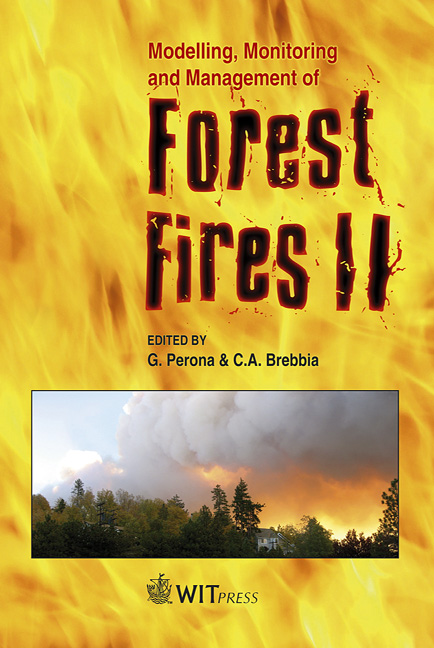Innovative Image Geo-referencing Tool For Decision Support In Wildfire Fighting
Price
Free (open access)
Transaction
Volume
137
Pages
11
Page Range
173 - 183
Published
2010
Size
2757 kb
Paper DOI
10.2495/FIVA100161
Copyright
WIT Press
Author(s)
A. Losso, L. Corgnati & G. Perona
Abstract
Forest fires prevention, monitoring and extinguishing operations in complex orography regions present dramatic problems related to hard environmental conditions, low population density and accessibility limitations affecting interventions activities and damage assessment. In the scientific landscape, there are many existing image geo-referencing tools. They are developed in order to rectify images, which come from fixed ground station and/or satellite platforms. Some of these use satellite images to geo-reference complex orography regions and ground images to geo-referencing plane orography regions by using Ground Control Point collections. The present work describes an innovative projective geo-referencing algorithm able to geo-reference complex orography regions using a fixed ground station images. Besides, it does not need the collection of Ground Control Points, which is a very hard task in complex orography environments. The system is an innovative image geo-referencing tool conceived for decision support aid for wildfire fighting in alpine regions. The system is operating within a monitoring system in the Piedmont area (Northwestern Italy) and operates on images sensed by a fixed monitoring network. The georeferencing software operates with a geometric and projective algorithm based on a Digital Elevation Model (DEM). The algorithm is built up of three main modules: sensors lens aberration correction, field-of-view localization on DEM, image geo-referencing. As said before, the system does not need any collection of Ground Control Points to rectify images. At the output of the system, each image pixel is linked to its geographical (Lat/Lon and UTM) coordinates. The final products are: a collection of scenario images sensed in the visible band; geo-referenced images with highlighted alarm pixels with overlaying DEM levels; topographic layers containing information to be used in case of intervention. Final images contain geo-referenced information about the sensors’ field of view on the analysed area, hot-spot positions, helicopter landing spot
Keywords
forest fires, fire monitoring, rectification, geo-referencing, image processing, alpine regions





